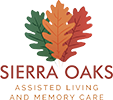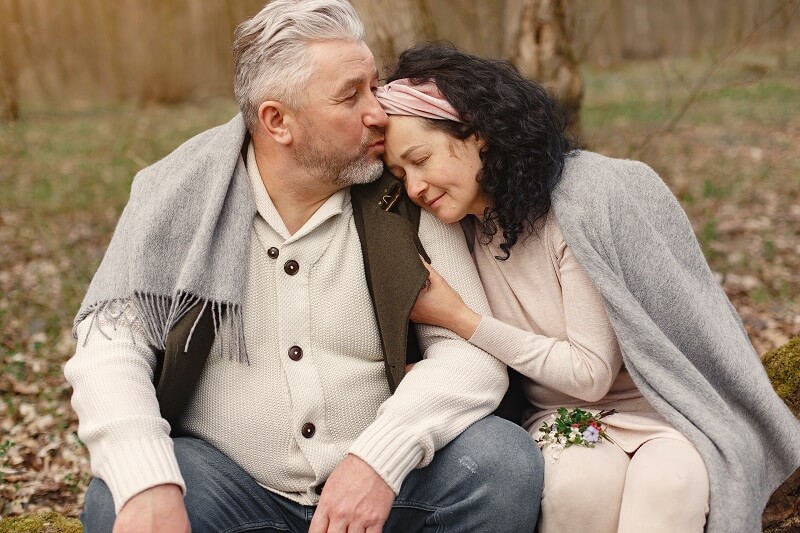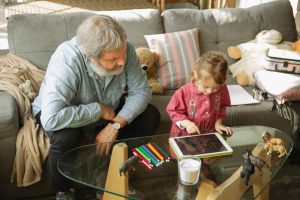Have you ever imagined a world where words fade into the realm of forgotten memories and leave one struggling silently? It happens to non-verbal seniors in the life journey when memory loss becomes an unwelcome companion. The unspoken struggles evolve as poignant melodies and envelop the existence with a shroud of silence.
In this exploration of empathy and compassion, let’s recognize the signs of the pain of non-verbal seniors so that every unspoken struggle is acknowledged with love, care, and support.
Memory Loss and Pain Perception in Non-Verbal Seniors
Pain is a perceptual and subjective experience with sensory, affective, and cognitive dimensions. Seniors with dementia have difficulty expressing pain and discomfort due to changes in cognitive abilities. The lack of verbal communication becomes a barrier and leaves seniors in a perplexing state.
Common Signs of Pain in Non-Verbal Seniors
Discerning pain in non-verbal seniors requires sensitivity, yet being mindful of subtle indications can yield essential information. Here are some prevalent signs that may offer clues to pain in non-verbal seniors. It can also help us spot the signs if seniors need to move into a memory care facility:
1. Facial Expressions
Facial expressions convey an individual’s emotions, intentions, and responses. Interpreting facial expressions in non-verbal seniors is essential for providing appropriate care and support. The caretakers identify distress whenever seniors have:
- Rapid Blinking
- Eye Narrowing Or Closure
- Frightened Expression
- Nose Wrinkling
- Distorted Expressions
- Upper-Lip Raising
- Brow Lowering
- Orbit Tightening
- Clenched Teeth
Identifying these facial expressions can create a more empathetic and supportive environment for non-verbal seniors in pain recognition.
2. Verbalizations & Vocalization
Verbalizations and vocalizations in the context of pain recognition provide vital insights into a person’s discomfort and distress. The non-verbal seniors who are unable to express pain through words call out through:
- Screaming
- Praying
- Crying
- Moaning
- Swearing
- Sighing
It’s a clear indicator that seniors are experiencing pain. The caretakers seeing these signs can provide support and comfort during challenging times.
3. Body Movements
Body movements convey a wide range of non-verbal seniors’ emotions, intentions, and responses. Whenever a caretaker observes the physical cues of:
- Rubbing a Body Area
- Rigidity
- Pacing
- Repetitive Movements
- Fidgeting
- Decreased Movement
- Guarding
- Rocking
The caretakers can provide appropriate care and support to relieve seniors’ pain and discomfort.
4. Interpersonal Interactions
Interpersonal interactions signify the emotional state and non-verbal senior’s needs. The seniors’ behavior communicates feeling and comfort levels. The significant indicators are:
- Resisting Personal Care
- Withdrawal/Isolation
- Aggression
Being attuned to non-verbal senior’s interpersonal interactions allows caretakers to foster a supportive and understanding environment.
5. Change in Mood and Mental State
The non-verbal senior’s emotional and cognitive states signal the underlying medical issue.
- Delirium
- Cognition Impairment Exacerbation
- Agitation
- Irritability
- Impaired Executive Function
- Declining Cognition
- Depressive Symptoms
- Crying
- Anxiety
By observing and interpreting these signs, caretakers can provide seniors with compassionate care and emotional comfort.
6. Change in Activity Patterns
The alterations in regular activity patterns provide valuable insights into the non-verbal senior’s emotional and physical needs. The caregivers should pay attention when:
- Change in Activity Patterns
- Wandering
- Sleep Disturbances
- Disengagement with Social Activities
- Staying in Bed
- Normal Routine Changes
By interpreting these changes, caretakers can promote non-verbal seniors’ overall well-being and emotional comfort.
7. Autonomic Signs
The autonomic signs indicate the non-verbal senior’s physiological responses to pain or discomfort. It includes:
- Skin Paleness
- Altered Breathing Patterns
- Heart Rate, Blood Pressure, and Temperature Fluctuations
Caretakers can use these cues to provide timely and appropriate interventions to address the seniors’ needs.
Empathetic Care and Pain Management Strategies
-
Empathetic Communication
The caretakers should be gentle and understanding when interacting with non-verbal seniors. The empathetic conversations bring a sense of safety to non-verbal seniors and enhance seniors’ quality of life.
-
Create a Calming Environment
The caretakers should create a Dementia Friendly home that is calm, quiet, and free from unnecessary stimuli to promote the well-being and comfort of non-verbal seniors with memory loss. A serene and peaceful environment reduces agitation and anxiety, which may be responsible for worsening pain.
-
Pain Medication Management
Each non-verbal senior pain experience is unique. Employing effective pain management plans can help alleviate pain, improve the overall quality of life, and ensure that seniors receive the proper care and support needed during the life journey with memory impairment.
-
Encourage Social Interactions
The caretakers can actively encourage social interactions to help non-verbal seniors feel valued, connected, and emotionally supported. It fosters a sense of purpose, reduces feelings of isolation, and makes each day more fulfilling and meaningful for seniors.
Wrapping Up
As seniors age, memory loss, often associated with conditions like dementia or Alzheimer’s disease, becomes a significant challenge for non-verbal seniors who struggle to express themselves verbally. Understanding pain perception becomes a challenge due to the lack of verbal communication. But being mindful of subtle cues can help ease the challenges of memory loss and enhance the well-being and happiness of non-verbal seniors on the life journey with memory loss.
If you’re ready to explore personalized memory care options for your loved one, reach out to us today. Let’s ensure they receive the understanding, care, and support they truly deserve.





